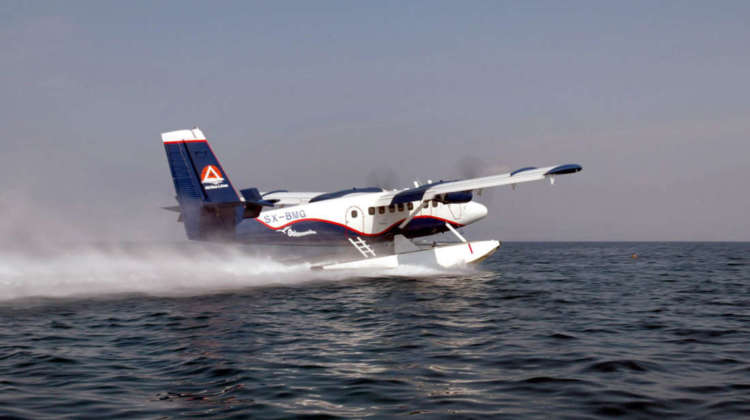
Among the many points of view that are heard for and against the expansion of Paros airport, several people see this expansion as a condition for a better offer of transport serving the island and others consider that it leads inevitably to a reckless kind of “development” and to the destruction of the Cycladic character of the island. The recent plan to create a network of hydroports and 30 seaplane water landing strips in the southern Aegean Sea and 150 across the country has been heralded as a godsend. We have absolutely nothing to do with the commercial interests associated with this project, but we believe that it is worth seriously considering the implementation of this idea in Paros / Antiparos, in order to resolve the dilemma about the airport in an innovative, original and “out of the box” way. It should be mentioned in this regard that at the beginning of Greek aviation around the early thirties, seaplanes were widely used for transport from Faliro Bay – Athens to the calm water of ports all over the country.
Seaplanes (whether they are the classic ones with large floats, or whether they are amphibian aircraft) will be able to serve transport from the mainland to the islands and Paros, thus satisfying the constant demand of the inhabitants for ease and speed of access, whether for health or educational needs or to attend family reunions or cultural events. The fact that there is already an air connection from Paros to Athens or Thessaloniki is not an obstacle, as the existence of the alternative to the seaplane would introduce an element of competition, breaking the existing air monopoly. The seaplanes could even serve more directly areas where many islanders traditionally live, such as Piraeus (or Rafina), without the need to take an additional means of transport (bus) to reach them, as now from Spata. In addition, seaplanes could serve as the link between the islands between them, in addition to ferries and other smaller boats which are not sufficient to meet all the tourist demand of the Aegean archipelago and the Cyclades in particular (and that for some of these boats one can express some doubts as for the safety). Thus, with proper planning, Paros would emerge more easily as a hub for visiting other Aegean islands (island hopping). The infrastructure needed for this is at first glance quite basic, as the formation of a jetty to land in a safe bay on the island is enough, which should be identified after a relevant study of the alternatives, so as not to destroy any of the beautiful beaches on the island.

In addition, seaplanes, due to their size, cannot carry a large number of tourists, like charter flights, which threaten to weigh heavily on the island’s often insufficient infrastructure in high season and the necessary services that it provides (water supply, garbage collection, wastewater treatment), road transport by public or private means, car parks) or, even worse, they promote the creation of large hotels for “all inclusive” tourists. Due to the size of seaplanes, the burden on the environment, both in terms of air pollution and noise pollution, is minimal, compared to the emissions emitted by jets and the noise occurred during their landing / take-off. With a coherent programming of their routes, they would not be interrupted during the winter, because their relatively small size implies in principle greater flexibility at a lower cost than a large aircraft. The seaplanes would even cancel out the geographical fragmentation of the archipelago, allowing communication between the islands, which in winter is very limited due to the lack of air transport and an adequate sea supply between the islands. Even private or medical visits between the islands would be easier, so that one does not have to arrive in Athens for medical reasons. Of course, it is enough that the models of the aircraft that will be selected (and which already exist) can cope with some small turbulences, which can appear even in a protected bay depending on the direction of the air, and of course can be properly maintained in Greece.
However, it is undeniable that finding a landing site avoids the construction (and maintenance) of airport runways and other buildings or parking lots that clearly add to the already crowded environment of a small or medium-sized island. In conclusion, the connection with seaplanes, which is successfully applied not only in the lakes of Canada, but also in the Caribbean islands or in the archipelagos of the Pacific, is perhaps the best solution for the restoration of territorial cohesion of the Greek archipelago both inter-inlands and with the mainland, as it will serve its inhabitants and visitors all year round without overloading the environment and with minimal infrastructure costs.
It is therefore worth considering this alternative with an open mind.
Your devoted hydroplaner

Leave a Reply